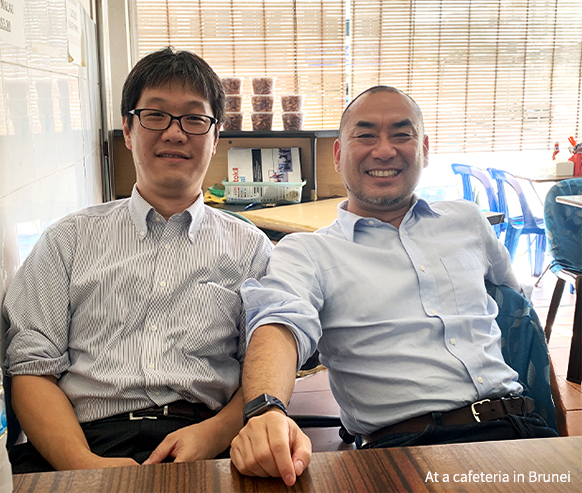Microalgae
Why Microalgae
An era when Sustainable Industrial Behavior becomes the Norm
Currently, more than 120 countries and regions have pledged to achieve carbon neutrality by 2050, and businesses have to rapidly adjust to such new norms thus resulting in the implementation of new environmental practices to achieve their SDG targets.
In order to change current business practices to adapt to the environmental requirements, companies must now pivot their business activities drastically to contribute to the realization of a sustainable economy.
A Process indispensable for future business activities
[PHOTOSYNTHESIS]
To realize a sustainable society where all human beings can lead enriching lives, we must overcome our dependence on finite fossil resources and reinvent our social practices.
The most promising resource is the utilization of solar energy that steadily reaches the earth. Ultimately, solar energy is the one and only infinite energy source we have (*).
*Fossil fuels such as petroleum and natural gas are transformed from organic matter produced by photosynthesis millions of years ago.
Human energy balance
(Unit: Zeta Joule * / year) * 10 to the 21st joule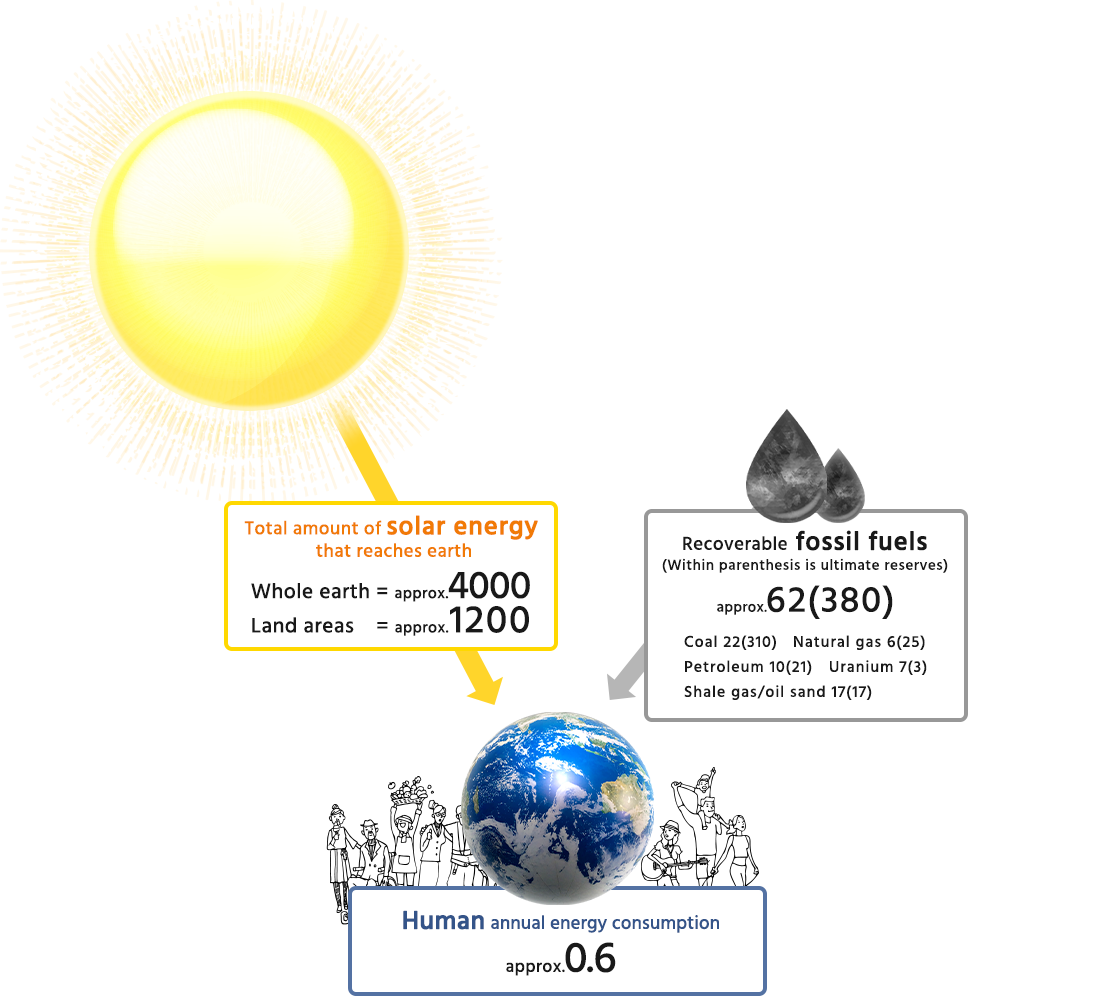
So how should we utilize this solar energy?
In recent years, the focus of environmentally sustainable industries has been on initiatives such as solar power generation, wind power generation, and geothermal power generation. However, only electricity can be produced from these processes. In other words, these processes are not able to produce various "substances" such as plastics which are currently made from fossil fuels.
On the other hand, photosynthesis is the only process that can efficiently store solar energy to produce various "substances" and used to produce various goods we use every day, including fuels, plastics, foods, cosmetics, and pharmaceuticals.
Photosynthesis by algae is the most promising way to produce substances using solar energy.
Photosynthesis is the only process that can produce substances
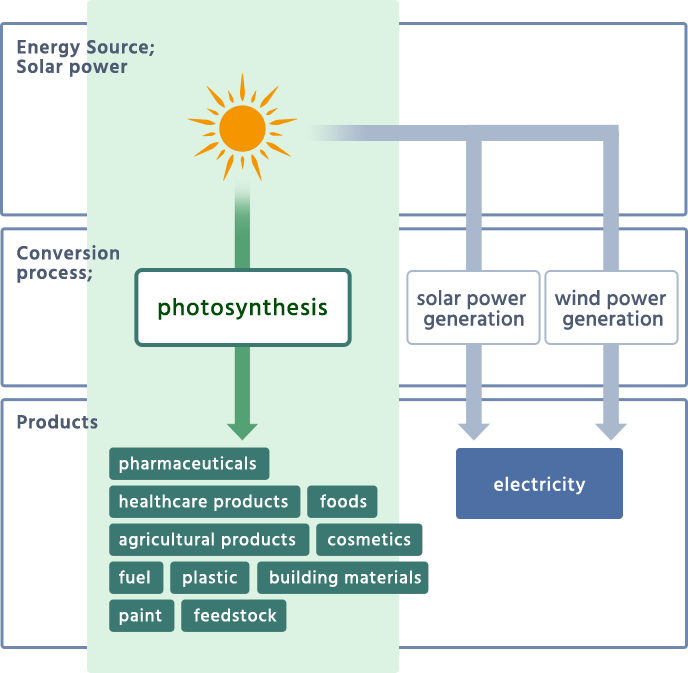
Why Algae are the Key to Photosynthesis Utilization
3 Reasons
- 01Highest efficiency of substance production utilizing photosynthesis
- Compared to terrestrial plants, the ability of algae to produce biomass is higher due to its overwhelming efficiency.
- Oil yield: more than double that of palm, which has the highest oil production efficiency out of all terrestrial plants.
- Protein yield: more than 16 times higher than soybeans, which is considered to have the highest protein productivity within agriculture.
* Biomass: Organic resources derived from animals and plants (excluding fossil fuels such as petroleum)
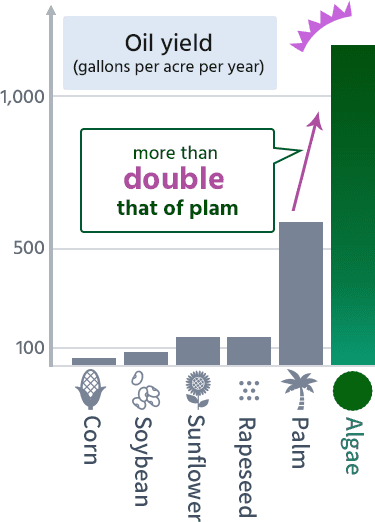

- 02Can be produced with minimal amounts of water
-
It is often thought that algae culture requires vast amounts of water, but in fact, it can be cultivated with much less water than agriculture and livestock. This is because with agriculture, most of the water sprayed on the fields evaporates or penetrates underground, whereas with algae culture, water only evaporates from the surface thus minimizing loss.
Finite freshwater resources have become a global environmental issue so algae that can be cultivated with a minimal amount of freshwater can be considered as a key element to mitigate this challenge and provide a way forward for environmentally sustainable businesses in the coming era.
Amount of water required to
produce 1kg of protein
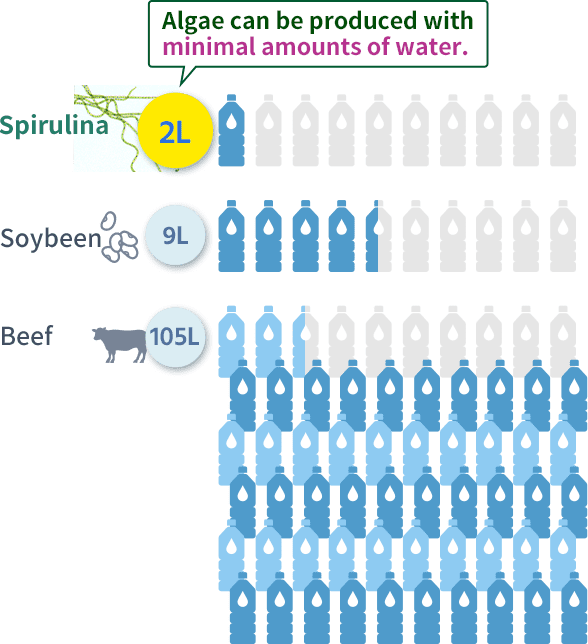
- 03Production of algae does not require arable land
- As long as there is water and light, algae can be cultivated anywhere, even on land which is not suitable for agriculture use such as deserts and wastelands. In fact, algae is being commercially produced on a large-scale today, in desert areas, lava plateaus, and even salt pans. As food shortage becomes a global challenge, this characteristic of algae is valuable as this means that algae biomass production does not compete with agriculture.
Issues on land use for agricultural purposes
- Rapid soil quality deterioration
is a global issue. - Only 11% of land on earth is arable
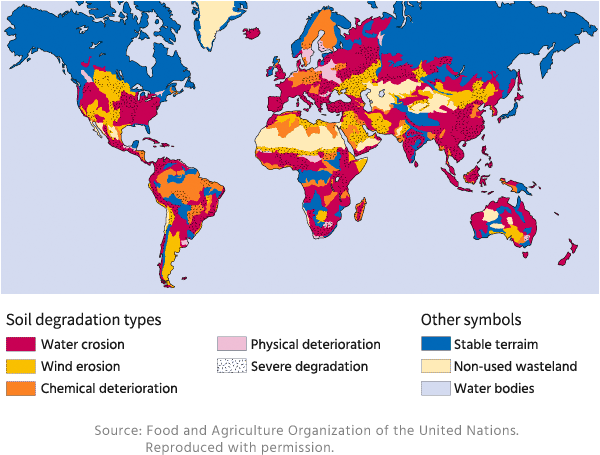
Use of land for algae production
- Basically, algae can be cultivated anywhere,
as long as there is water and light.

NEDO Strategic Next Generation Biomass Energy Utilization Technology Development Project (2012-2016, with IHI et al.)
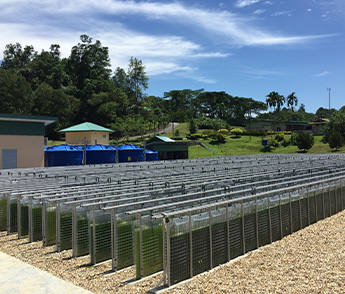
Facility owner: Sarawak Biodiversity Center

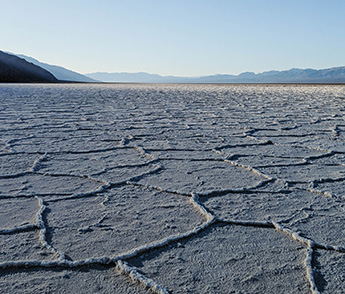
Our Future
Powered by the sun, algae utilize the process of photosynthesis to grow, while absorbing CO2
Did you know?
Many of the products we use in our everyday lives can be made using algae as raw material.
・Fuel for cars, airplanes, ships
・Plastic and synthetic fibers used for straws, utensils, smartphones, clothing, and buildings
・Protein, an important nutrient
・Feedstock for fish, chicken, pigs, and cows
・Dietary supplements
・Cosmetics and toiletries
・Pharmaceuticals

As you have seen, algae biomass is a better alternative to using finite fossil resources to produce various products. Algae play a crucial role in saving our planet, which is challenged by several environmental issues today. With algae, we can create a sustainable society, providing a better place to live for our future generations.
When algae becomes a major raw material used by humans, we will be liberated from the burdens of having to constantly take environmental countermeasures, and the world will become a more enriching place to live in.
Through MATSURI, we will make all these come true, with the power of algae.
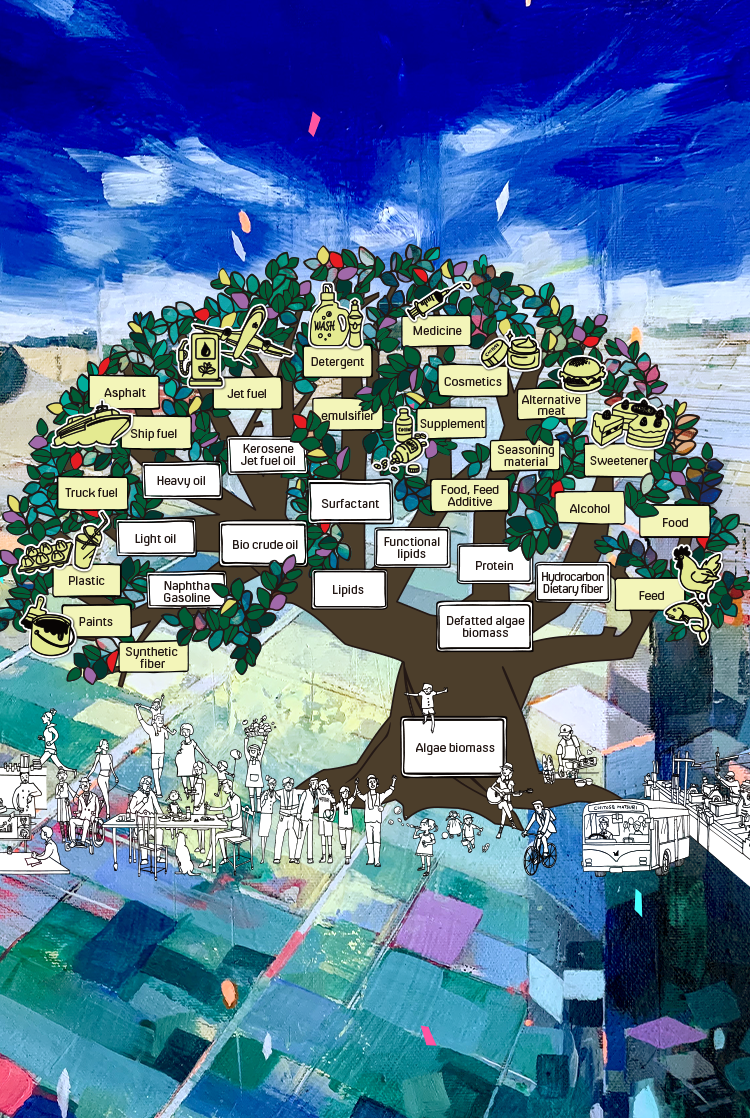
Road map
MATSURI is expanding large-scale microalgae biomass production while developing new applications. We completed a 0.1-hectare facility in November 2018 and began operating a 5-hectare facility, CHITOSE Carbon Capture Central (C4), in April 2023. Currently, preparations are underway to open a 100-hectare facility, with plans to expand to 2,000 hectares by 2030 and 10 million hectares by 2050.
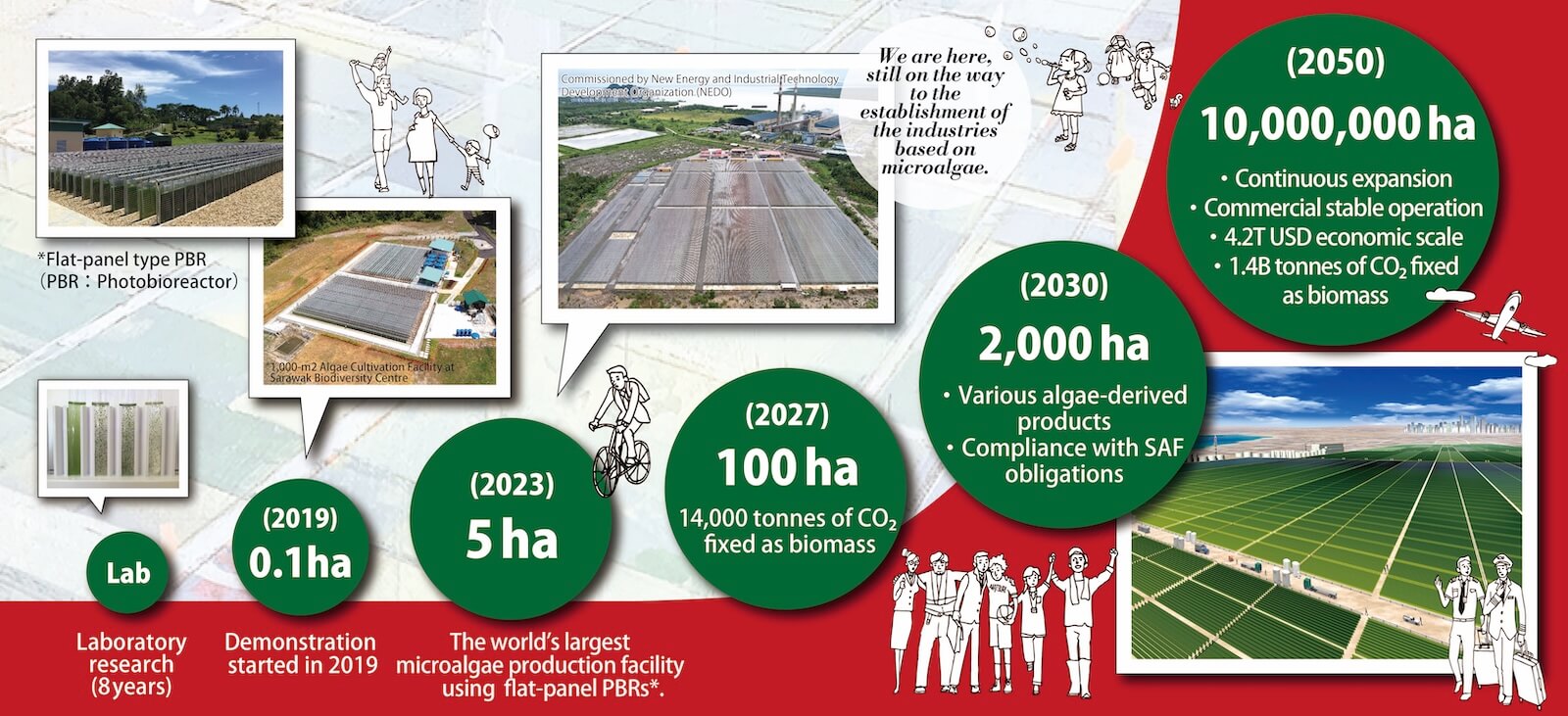
Collaborating Institutions
To develop evaluation criteria and industry standards, we will collaborate with the IMAT (Institute of Microalgal Technology, Japan). For the demonstration of large-scale outdoor mass cultivation, we will partner with the Sarawak Biodiversity Center and NEDO (New Energy and Industrial Technology Development Organization) under the Ministry of Economy, Trade and Industry to realize our objectives.

Outdoor Large-Scale Culture Demonstration Project by NEDO
Chitose Research Institute carried out a project of building the world’s largest outdoor 5 ha culture demonstration project, entrusted by NEDO to develop technologies for the production of bio-jet fuel from algae. Located in close proximity to the equator in the tropics with abundance of sunlight, we will be making effective use of PhotoBioReactor (PBR) technology and exhaust gas from an existing power plant for algae production. Through this project we will collaborate with the MATSURI project in the joint research, to make improvement of the economic efficiency along with advancement of future bio-jet fuel production.

Institute of Microalgal Technology, Japan (IMAT)
The objective is to develop procedures and necessary requirements for a more systematic and efficient R&D production of microalgae.
A test bed will be constructed enabling the acquisition of standardized data to be obtained through various tests using standard methods on biomass productivity, economics, and environmental factors.
Relevant information will be shared for the discussion on the assumptions and boundary conditions essential for standardization. Recommendations to the industry and government entities will be made in collaboration with various algae-related projects including MATSURI.
 Selection of algae species and establishment of culture system
Selection of algae species and establishment of culture system
-
 3 Types of Basic culture system / Standardization of culture and measurement conditions
3 Types of Basic culture system / Standardization of culture and measurement conditions
-
 Standardization of Climate Conditions
Standardization of Climate Conditions
-
 Implementation of various downstream processes / Standardization of Methods
Implementation of various downstream processes / Standardization of Methods
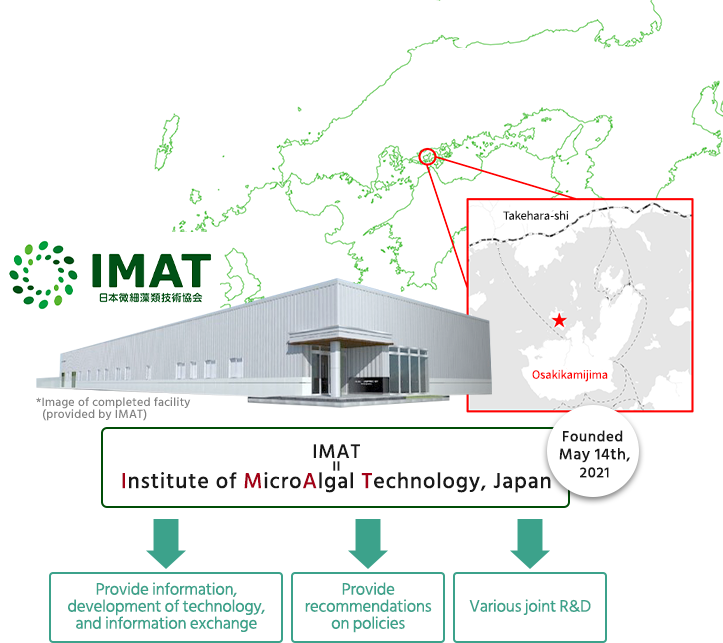
PROJECTS
FEATURES
-
 Honest MATSURI Diary Extra Edition: Latest Information on Biofuels in the United States
Honest MATSURI Diary Extra Edition: Latest Information on Biofuels in the United States
Hello. I am Sally, a new mem…
-
 Honest MATSURI Diary Extra Edition: What to convey in an era of criticism of greenwashing
Honest MATSURI Diary Extra Edition: What to convey in an era of criticism of greenwashing
Hello. I am Sally, a new mem…
-
 C4 inspection event for 32 MATSURI participating companies
C4 inspection event for 32 MATSURI participating companies
A C4 inspection event was he…
-
 意志や価値観を広げるということ「Decision Making to Expand #5」
意志や価値観を広げるということ「Decision Making to Expand #5」
前回と前々回は、物事を整理しすぎると意志や価値観が広がら…








